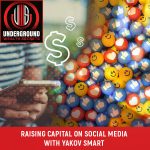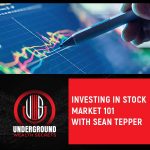How To Be Successful In E-Commerce With Ann Sieg
- Post author By rldiamond
- Post date January 27, 2023
- No Comments on How To Be Successful In E-Commerce With Ann Sieg
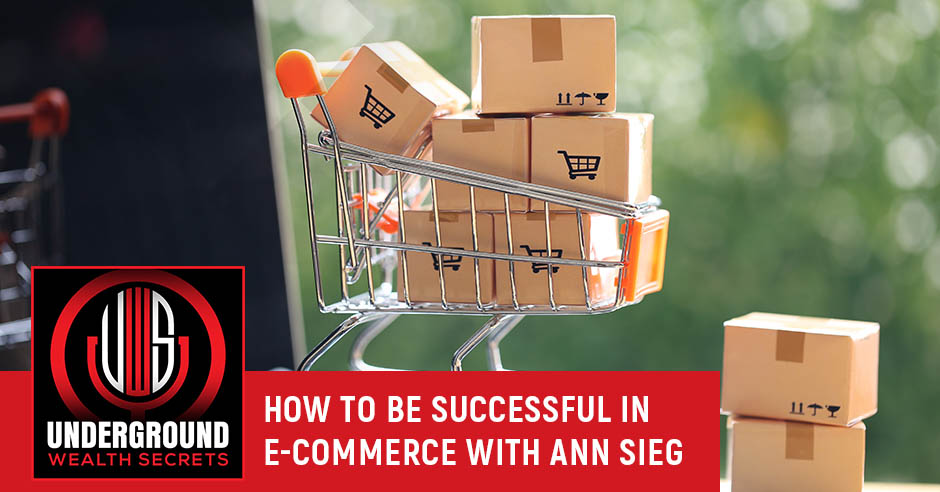
With the internet being an interconnected and continuously growing space, those who jump into e-commerce can expect limitless opportunities to enjoy. However, those who don’t know how to attract an audience or love to bite more than what they can chew are doomed to fail. Ann Sieg comes to the rescue with an amazing approach: become a third-party seller through an already-established platform. Joining Julie Houston, she explains how she provides comprehensive training on selling products through Amazon while keeping a narrow yet clear goal. Ann also discusses the three pillars of e-commerce success and how to determine red flags in a corporate relationship easily.
—
Watch the episode here
Listen to the podcast here
How To Be Successful In E-Commerce With Ann Sieg
I am very honored and excited. We have a guest that I’ve known for quite a while now through our relationships in the industry. I want to introduce her to you. Her name is Ann. Ann, welcome to the show. It’s such an honor to have you on.
It’s my privilege. I’m excited to be here and share my background story and humble beginnings through different family enterprises that we had.
Before we dive in, so the audience knows, I met Ann through other relationships years ago. She has an incredible business model that she’s going to share with us, but aside from that, I want to learn a little more about Ann. Ann, let’s start with you. Can you tell us a little bit about yourself, where you started, and how you ended up where you’re at?
As a background, when I was a young girl, I knitted some Christmas bells. My grandmother taught me how to knit. My mom said, “You should go out in the neighborhood and sell those Christmas bells.” I was 7 or 8 years old. I was very young. My first store was a cardboard box. All my bells were in there. I even had three for $1. As a memory, it’s on my bookshelf. I sold them for $0.50 a piece and three for $1 at a bundled offer. When I was about 7 or 8 years old, my mom set me up.
I went on in the neighborhood. My mom was not with me. I went out by myself. I sold every single Christmas bell. It’s not like I went straight up into business at that time, but that experience of holding this box sure was embedded in my mind. I did sell them all. It had this sound of the rustling of dollar bills and quarters. My mom had to teach me how to exchange $1 and give $0.50 and all this kind of thing. I learned that I had value in the marketplace. I created something, went out, and sold it.
Speed forward, it wasn’t until after college that I then got into direct sales. Direct sales were my way of then getting into selling other people’s stuff at home parties. This goes back a long time for those of you who are more in my age group. We had home parties. Now, it’s like, “We buy off of Facebook.” I did that. I enjoy sales. I love it. It’s fun. It’s a wonderful trade. I’m also a marketer.
The background behind that was I taught my boys. We had numerous family businesses over the years. We did real estate investment. I can’t say it was terribly successful, mind you, but we did it. We went through Carleton Sheets way back when. This was tapes back then. I was exposed to Robert Kiyosaki, who encouraged real estate as well, but where I found my sweet spot was online marketing.
I had my son read all of Robert Kiyosaki’s books in high school. We ended up partnering together as business partners in 2005. He had become one of the top affiliates in the world at age 21 for Best Western, Walmart, and GetResponse. When he was 21, he was doing his thing. I was going on my path and getting into some online training and marketing. This was after he had a severe motorcycle accident. He was living in our house as I was taking care of him.
I was starting to take off. I said, “You should consider partnering up with me.” He was becoming a top affiliate marketer, and then I was learning more about the sales side. We formed a partnership. The schematic of our first eBook is right on my wall up there. We sold $4 million worth of our first book eBook. It’s because he was very good at Google AdWords and doing affiliate marketing.
That was before things changed after the Google slap of 2009. They kicked off 10,000 direct-response marketers. Thankfully, we had a big list. There were 400,000 people on our list. We lived off that list, I kid you not, for almost eight years with a team of 8 to 10 people doing affiliate marketing. The moral of that story is a list is a very valuable asset. We had a little convo about that before the show started.
We lived off that list with little bouts of being able to get on the ad platforms, not for very long because we’re in an industry that the platforms didn’t care for. It was called network marketing or MLM. We kept getting booted off. That’s why we then shifted to eCommerce. A lot of times, business is knowing when to pivot or how to pivot and do it successfully.
Entrepreneurship is knowing when to pivot and do it successfully. Sometimes, you have to reinvent yourself. Click To TweetThis is the life of an entrepreneur. You have to reinvent yourself sometimes. That’s what we did. We had a great intro to the industry together. It was huge and great. We built up that list. There were lean times while we were living off that list, but we kept a team together through all that time and then shifted into the eCommerce training space, which was wonderful.
How long ago did you shift into the eCommerce space?
Years ago, I did a promotion. I had an inner circle. We were teaching building sales funnels. This would have been December 31st, 2013. It took us about a year to fully transition out because we did have a mentorship group at that time but then the success with our students was so immediate. It was like, “We will go this way now.” We haven’t looked back. We’re now moving into building a company of companies as we then build up the resources that help support Amazon sellers.
That’s what our three-year living vision is about now so that we’re not just teaching or training, which is bedrock and important, but necessarily, they have these other services that they need. We’re going to be building a supply chain of sorts. That’s what we’re working on. That’s the movement we’re going toward so that it’s more all-encompassing. They need prep and ship centers and teams of VAs, for example. They need product leads lists.
We are going into expansion plans beyond our training. That’s the forward direction of the company because I want to do more than training. I want to build up real estate assets that can be a part of this whole industry. It’s so huge. This is not going away. eCommerce, as we all know, is not going away. It keeps going more every year because people get addicted to going online.
That is so true. Do you do primarily a lot on Amazon? Have you done other platforms?
We have. We were teaching on eBay. eBay is so minuscule compared to Amazon. If anything as it relates to eBay, it’s more so from the perspective of multi-channel, but it takes people like it takes time to learn multiple ad platforms between Facebook and YouTube. Each one is so unique and different that you don’t quickly master that, and then you’re onto the next one. They each are a beast in themselves for ad platforms. Likewise, for the different eCommerce platforms between eBay, Etsy, and Amazon, Amazon is the big 600 gorilla or big behemoth in the room. Walmart is the closest.
I often wondered that.
By a landslide. It is best to start with Amazon because it’s the gold standard. By default, they train you to be a good eCommerce seller. You will feel it through their terms of service if you do any little shenanigans. That’s not how it works on Amazon. You’ve got to follow their terms of service, but their market reach is so enormous that you wonder because years ago, my son and I were like, “What about saturation?” It’s still a non-issue years later. I’m not saying there isn’t a competition, but you still can make a very good living on Amazon. It’s a good place to be.
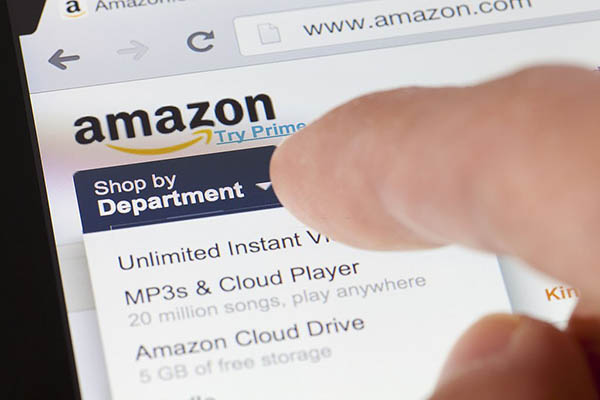
Has there been a person in your life, a role model, or a mentor that impacted you on your entrepreneurial road to success?
It was primarily through the first training company that I became engaged with back in 2004 when I first came online. It was through my son’s prompting, “You need to go online.” I sure would like to know what keywords I typed in, but I had the good fortune to have a great first online mentor. It was a training company, but I knew I needed more than training. I liked to have a mentor. He was fantastic. We still work together. My first online mentor is the top executive in my company. That’s who impacted me. We are still working together.
How incredible is that?
It’s pretty amazing because we both have realized, “I probably talked to you more than my spouse.”
They’re both your work family.
I only want to work with people that I like working with. If I don’t like working with someone, I don’t want to have a bummer work environment. I learned that through a partnership that I went through early in the day. I always look at what’s the big takeaway here. There’s no amount of money you can pay me to work with someone who’s painful in a painful working relationship.
I’m with you 100%. My team is the same. We have good morale. We work hard and play hard, but the morale is always fun. You have to have a good team and be around that.
A good team is the most valuable asset you have in business, in my view. This is why I worked so hard to keep it going during those lean years, “I have to keep my team.” It’s always the team because it’s hard to replace that sync, that energy, and that brain trust. You cherish your team to get it to that level.
They’re like my family.
It’s a family. Our people will call it such. You want your work environment to be meaningful and enjoyable.
I’ve got another question. What is one of the biggest learning experiences you’ve ever had in your life of owning all these different businesses? That would be something you would think, “I need to share this with the readers.” Is there one good thing you could think of that you could share that you’ve learned from?
There are two, but one is more emotionally painful. That ties in with who you are working with. It’s a bad partnership. I’m talking about when you incorporate with someone. The lawyers will tell you, “This is like a marriage.” If you’re going into a possession where you feel you need them more than they need you, then you might be a little more vulnerable to falling into a bad partnership. This is what was happening with the situation. We’re moving along with the papers, but they were red flags. Do you know how that is with the red flags?

They’re the occasional gut feelings in the beginning that eventually get to the point where you’re like, “I know it’s not right.”
It was progressing along. What I can’t stand is when people say they’re going to do something and they don’t. My word is my bond. My highest asset is my word and my reputation out in the marketplace. I am very vigilant over that because once it gets tarnished, that’s hard to rectify. The internet has a lifelong history. In any case, there were these red flags. My husband was seeing them too. Those papers sat there unsigned because there was yet another not following through.
I thought, “This doesn’t work in partnerships.” That’s not cool because when you say you’re going to do that, I start to move forward my engine and start to roll out the plans based on that, “You’re going to do this. I’m halfway down the football field. How is that again? Are you not going to be doing that?” I need that transparency. What I see as a markup is an incredible immaturity and a lack of candor and openness. For me, it’s getting into bed with the wrong partner legally.
That’s the biggest learning experience.
The one that I mentioned a moment ago was my first one online. There I was again. I have to pay attention to those red flags to get out of those agreements. Get counsel. If you have to talk to three different attorneys, it’s whatever you have to do. You’re better off doing that due diligence at the beginning instead of the mess you have to deal with afterward. It’s so not worth it. In that one, we were able to circumvent it before it was signed on the dotted line. It’s being very aware of who you partner with. That’s the hardest learned lesson.
I’ve had situations like that in the past, so I can relate. That was one of the things I learned very hard in 2022. It’s a lesson I learned.
I am sorry for you. People go through a divorce. It’s painful.
It’s emotional too. You’re mourning.
Here’s a saying that I learned from a marketer. Eben Pagan is his name. I went to Get Altitude, which is why back in 2007, it was a huge conference. He said, “Always start with a small pitch.” I’ve never forgotten that. It doesn’t even necessarily mean the partnership. That’s the most extreme but don’t jump in all sold and starry-eyed. Do a small pitch and see how it goes and how they do. The people who paint the grand and glorious the most are the ones you need to beat the most.
Don’t just jump in all sold and starry-eyed in a business partnership. Do a small pitch first and see how it goes. Click To TweetIt’s a lot of fluff. I get it. I see it too. I meet a lot of people.
It sounds good but too good, maybe. The more they boast and the more braggadocious they are, the more you go, “This seems suspicious.” There you go. That’s an underground well secret right there.
I appreciate that. That’s great feedback. Everybody needs to hear something. I certainly needed to hear that. I can relate to it. It’s a great tip to share. Getting back to the eCommerce side, you’re branching out now by building out these other company companies. Can you give a sky-eye quick overview of how this works for you on the eCommerce side? What would our readers expect? How would this process work?
I’m going to do a global picture for people because everybody pretty much knows there are Amazon sellers. Somehow they make money on Amazon. There are many different ways to make money on Amazon. They have an affiliate program, which I do not recommend at all. It’s so pansy. You barely make a dime with their affiliate program. You would have to be a mega marketer to do that because we were mega marketers, and we did do it in pairs.
That being said, there are a lot of different ways. The one I want to hone in on that we teach is becoming a third-party seller, which means you’re selling through Amazon products. That’s the one I’m going to hone in on because that’s our specialty. If you start to go surfing on Google and whatnot, you’re going to start to get bombarded with ads.
I paint a picture of coming into the Amazon ecosystem as a third-party seller. It’s like a swimming pool. You have the shallow end and the deep end of the swimming pool. When you are new, you have no frame of reference or context of the ad and the method you’re looking at, “Is it even appropriate for me as a brand new person?” You don’t have a frame of reference. I’m going to help with that frame of reference so that at least people are walking away educated.
As a seller on Amazon, you have to source products and source means to find them. There’s a whole realm of different ways for which you can find products to sell on Amazon with varying degrees of complexity. At the shallow end of the pool, where you would put in a child who’s learning to swim at age two, you’re going in the shallow end of the pool, so they don’t drown. The same is true in business. If you jump into the deep end, you could drown and lose your shirt, the money, and everything.

We start people with a method called arbitrage on the shallow end of the pool. If you keep going in complexity, you will maybe go to wholesale or liquidation. You might go to print on demand or go to a private label. You might then even move out of the Amazon ecosystem and do Shopify, which means you better be a competent marketer because you’re going to have your website. You better know how to drive traffic and understand conversions.
We have people coming in brand new. We start them with arbitrage. That has the least variables for something to go wrong. People don’t understand that there are varying degrees of complexity and risk. If you’re over at a private label sourcing from China, for example, you’re way in the deep end of the pool. If you’re a beginner, one could say you have no business being there, but you don’t know that. You read someone’s sales letter. You’re like, “This is where I need to be swimming.” When you’re new, you want to mitigate the risk to as small as you can. That would be arbitrage. It’s not to say a private label doesn’t work, but your likelihood of success becomes infinitesimally smaller.
I’m going to give you an example. It is so quick and easy with arbitrage. With your smartphone, you can download the Amazon seller app. Amazon made the app. It’s free, but it won’t work unless you have an Amazon account. What does this app allow you to do? It allows you to scan with your phone the UPC code on any product. You will recognize Burt’s Bees. This is my favorite. I only buy it from Amazon.
When you scan this with your phone, it’s going to research within microseconds and identify, “Is it being sold on the Amazon platform?” When it does that, it’s going to tell you all this very critical data, what it’s selling for, how much competition is there, and what are the shipping fees. It lays it all out. Let’s say I’m Walgreens. They sell this at Walgreens. You scan it and then put in that cost in this little field.
You’re going to instantly know the profitability of that product, which might be zero or negative, or you’re going to see that as profitable. That method is called arbitrage. It means you would then buy this product. This is not profitable to flip and sell on Amazon. I’ve already checked it out, but you would scan it. There are 750 million products minimum being sold on Amazon, with more getting listed every day.
I order everything from Amazon.
It’s the same here. That’s called arbitrage. There’s online arbitrage. We have special software that we have created for that purpose. That’s what you can do in the easy end of the pool or the shallow end where you’ve lowered your risk mitigation, whereas if you do sourcing from China. My son has a sourcing agent in China. We have taken people over there, but now, you have 300 variables for something to go wrong. Maybe the factory burned down. Maybe this happened. Maybe it’s the supply chain to the factory.
“There’s a strike going on at the docks at LA. The ships are now sitting out at sea for 3 to 4 months. I bought those products from China. I bought a whole container full that cost me $30,000. It’s sitting out there.” The variables are stacked up that high. If you’re super experienced and you’ve got multiple supply chains, that’s for multimillion-dollar sellers. That’s not for a beginner seller, yet one of the best training programs out there teaches people that’s the first place to start. That’s a terrible thing to do. That’s a very dangerous place to start. You should start where it’s easiest.

We start with the arbitrage. There’s that. I want to talk about a global view. You rarely hear the global view because they have one main goal to bring you in a narrow channel to settle on one offer. We have taught all the methods that I talked about. We have taught print-on-demand, wholesale, private label, and Shopify. We have taught all of those, but for your audience, you’re getting the global view. We have one of our most popular free content pieces. It’s on our homepage. It’s called the Three Pillars of eCommerce Success. I’m going to go through those. I tell people, “When you’re looking at any business model, if they don’t meet these three criteria, walk on by.”
Pillar number one is you need to look for a business model that can generate quick cashflow. Sourcing from China is not a way to generate quick cashflow. You’re probably not going to get your product here until about nine months later because you have to do a lot of testing. That’s not quick cashflow. You want to look for quick cashflow. If you learn how to do arbitrage through local stores, you could be out the next day, be shipping out within 3 to 4 days, and be selling and making money within 2 weeks. That’s quick cashflow.
Generate cashflow so you can jumpstart your business and keep it going so that you’re not having to keep funding your business through your savings and a monthly paycheck. We put an X over that. The next thing that we teach in the Three Pillars of eCommerce Success is to automate systems. Julie, you are probably a very big believer in that. We do teach that starting on day one. It is a high-level skillset, but we teach it to them because people say, “I want to grow a big business. I want to be able to have it be scalable.”
You’re going to have to understand and appreciate the value of having systems in your business. This is not a Shiny Object audience here. I’m speaking into the hearts of the folks who want to hear the grownup conversation. Don’t paint it all pretty for me. I’m going to talk about the real raw conversation, which is it’s having the systems in place and having a team that can help run those. If you can tap into a system where they can give you their standard operating procedures, it’s worth several thousand dollars because they did the hard work to do it.
When they say, “Here’s our blueprint,” that’s what McDonald’s does with their franchise in Hamburger University. Here, it’s proven. That’s what we do with our members here. We have proven standard operating procedures. You’re now going to need to hire virtual assistants who can help run those systems for you. That doesn’t happen overnight. It’s a skillset. That’s pillar number two if you want to grow a scalable business. Otherwise, you’re a one-man show running around crazy, trying to do everything.
The last thing I tell people to look for is, “Are you building assets? Is this going to be something marketable? Is it going to have value in the marketplace that someone would be willing to write a check out for?” We have coaches who have developed their businesses. Indeed, there are teams who are running their businesses for them. They’ve got 30 minutes of their day to check in with their lead dog who’s overseeing the team of VAs.
They worked hard to get there, but they’ve got all the protocols and all the systems in place, whether that took them a year and a half. It’s well worth it because now they’ve got lifestyle and cashflow. Those three pillars are generate cashflow, automate systems, and build assets. That’s what we tell people to look for. If you’re going to look to get into an endeavor, consider those. That’s what we say to look for, especially in eCommerce.
That’s great feedback. Ann, what is one of probably the biggest accomplishments you’ve had in your entrepreneurial career? Is there any specific time or thing that stood out when you knew, “This is a special moment?” There are so many. We all have these goals, milestones, and things, whether financial, paying off the house, or whatever it is. Is there any moment from your career?
I have one. It took a while to accomplish, but I get this dog to a bone factor when I make up my mind. When I made the determination, this is doable. I see other people doing it. It’s my turn. I’m going to do it too. It was our application funnel. Somehow I got into someone’s funnel. They had an eBook. It was a book or another program. It led to, “Would you like a consultation?” I’m like, “Yes.” I had been testing a Facebook group launch for over a year. I was looking for a new to develop a more enhanced funnel. You’re a funnel gal. You and I are funnel people. I love sales funnels. That’s my thing.
I do too. I love working in funnels. It’s fun building it, putting it together, and then seeing it all work.
It’s my all-time favorite. With the application funnel, I only had one other person to reference. I didn’t know a program to get into. I tried with one guy. I had to wait until module seven to get it. I’m like, “I’ve got the whole funnel. It’s converting here but not here.” The big breakthrough was when we shifted the CTA. Instead of two free training, it was to book a call. It was so amazing.
I went all out. I rented an Airbnb. I flew my son up. He was in Mexico at that time. He’s our videographer. He was down there as a digital nomad. I’m like, “I’m going to fly you up here. We have to do this thing.” I went all out. Things were getting tight at that time. It’s when you find out what you’re made of. When you’re pushed to the edge, it’s like, “This is when I need to go all out and not hold back.” As soon as that went out, it instantly started to convert. It was like pulling down the lever.
It’s just changing a few little words.
It’s changing the CTA. We’re testing them every day and looking at the data, the Vimeo stats, and this and that. It’s a beautiful offer. It has these things that I talked about too. My son left the business. It was in 2016. He was my marketer. I took over marketing. He was my business partner.
Were you still partners at the time?
He left in 2016. I took on all the marketing and became the marketing director for six years. When I rolled out my three-year living vision in June, he was like, “I would like to be a part of this.” I designed that application funnel. That was all me. I created all the funnels after he had left. I grew the team substantially more than double in size, but now, he has taken my place as director. I’m back to the CEO.
That’s a cool story. That’s a big accomplishment.
That was a tough one. It took us about five months. I was so fastidious. I was like, “I’m going to crack the code here.” I knew others were doing it. It’s like, “It has to be my turn too.” It’s pressing in, leaning in, talking to more people, and getting advice. It changed everything.
What a story. That is incredible. It has been such a pleasure having you on the show. Before we close out, do you have any final words or thoughts you want to share with our readers?
I understand this is a varied audience who is interested in entrepreneurship. I am going to encourage people. I don’t know where you’ve thrown your line into the water to reel your fish, but eCommerce is an exciting place to be. It is virtually limitless, so much so that the reason I got inspired to expand what we’re doing is I see my top sellers, “You’re opening up that company now too. You’re opening up your third company.” I’m like, “Say what?” It’s so opportune.
E-commerce is an exciting place to be. It is virtually limitless. Click To TweetWhat you want to look for in an industry is, “Do the waters get deeper with opportunities? Do they expand? Does it end at one thing?” This is virtually limitless. For example, they go ahead and set up their prep and ship centers. One of my gals opened up three. She gets them fully automated too. Her son in Thailand runs her prep and ship over in Los Angeles. She has been an account manager. I don’t think she has done ads for people, but she keeps finding these other businesses. She is a business of businesses.
What I’m trying to say is it doesn’t have to end with being an Amazon seller. In our case, we teach eCommerce training. We’re going to expand because there are so many needs along the way within this industry. Our sellers naturally see this. One does a product leads list company. One of our coaches has twelve VAs. She started at a very humble beginning of $300 in inventory and grew it to about $180,000 in two years. She now has all these employees in the Philippines. Her three little kids help run the business. It’s an endless opportunity. I invite your people to come and learn.
The other part is I want to encourage people. I’ve been a lifelong educator. I’ve been homeschooled for twelve years. My parents are both teachers. I was a sports coach for 12 to 15 years as well. That was my love and passion until my body was like, “I don’t think so.” My hands were killing me. I had tendonitis. I loved it passionately, but what I want people to think about is to thrive and prosper, and be in a learning environment where you feel fully supported so that you feel comfortable and encouraged.
What I feel makes my community different is how we set up our education platform. I’m not a believer in just training. I’m a believer in community and mentorship. It’s all-encompassing. The reason is when I first came online, I had the benefit of having a great mentor. I have more than recreated the experience that I had that led to great success. I want to be that launching pad for other people.
Thank you so much, Ann. I want to thank you so much for being a guest on our show. It was such an honor to have you on.
Thank you so much for having me here. It’s a pleasure to meet with you all. As readers, I hope you enjoyed this information.
Thanks again.
Important Links
- UndergroundWealthSecrets.net/eCommerce
- UndergroundWealthSecrets.net/FreeCourse
- UndergroundWealthSecrets.net/FacebookPage
- UndergroundWealthSecrets.net/TikTok
- UndergroundWealthSecrets.net/YouTube
About Ann Sieg
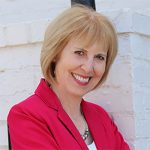 Coach, Author & Online Business Mentor
Coach, Author & Online Business Mentor
Ann Sieg is the author of three widely acclaimed books on how to attract customers online and generated over 4.2 million in sales from her first e-book over 13 years ago.
This all as a result of Ann and her husband losing their auto glass business almost overnight due to a new state law. Ann took her little “side-hustle” business and doubled-down…taking her sales from 2K per month to 90K per month in three months’ time. It was more than enough to bring her husband home.
She went on to build an online empire… network marketing, info marketing, affiliate marketing, creating and selling her own products… Ann did it all… to the tune of $20 million+ in sales.
Ann’s training has impacted hundreds of thousands of people worldwide to achieve online success all while working from home. But nothing has matched the rapid success of her e-commerce students. It’s not uncommon for them to see cash flow in the first few days or weeks of starting their businesses. And others have achieved 6, 7, and even 8 figure incomes – many through her free training alone.
Ann is passionate to help 1000 people make $10,000 a month and build their own family economy working from home.



